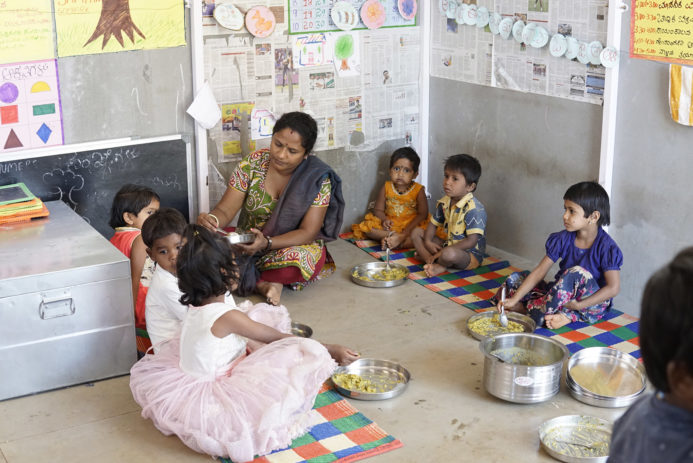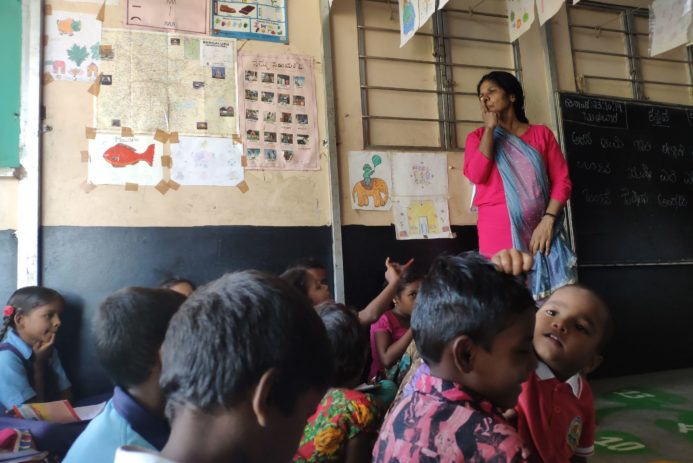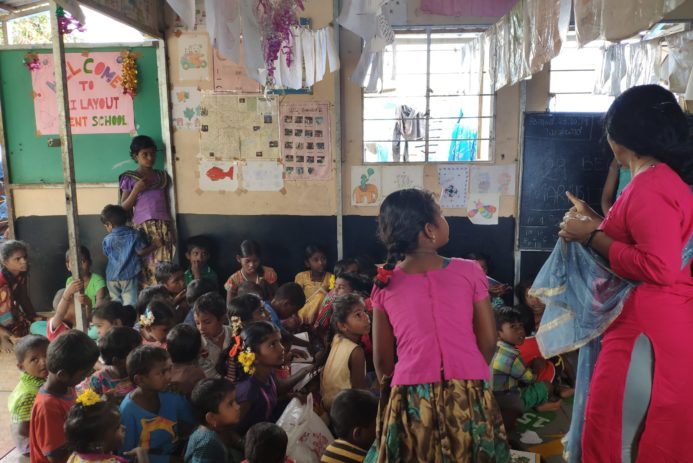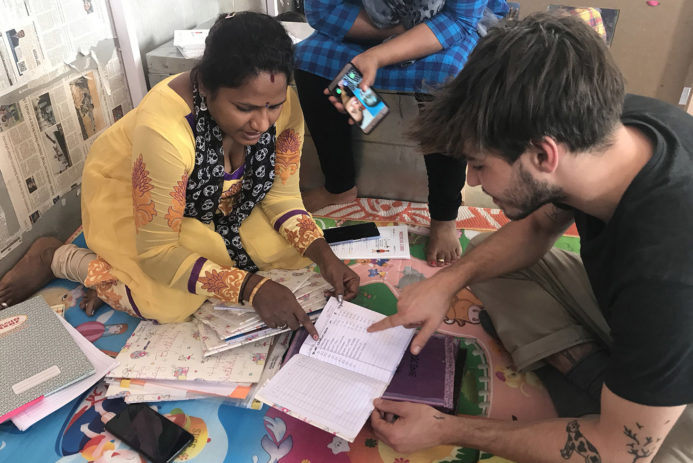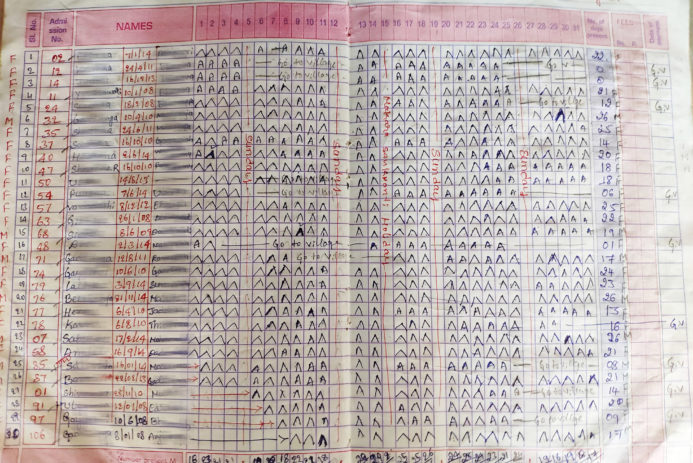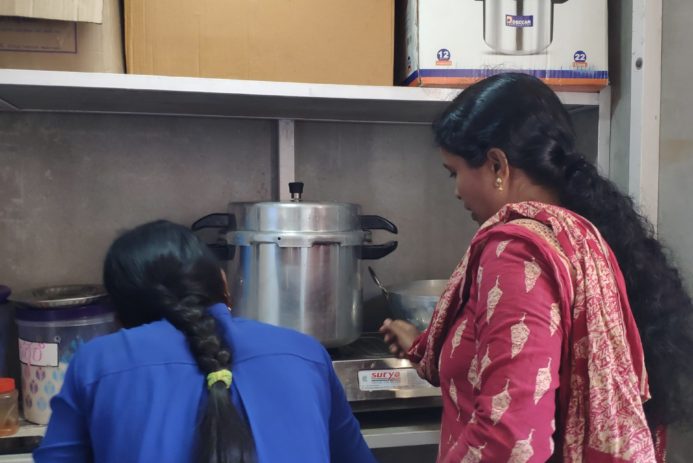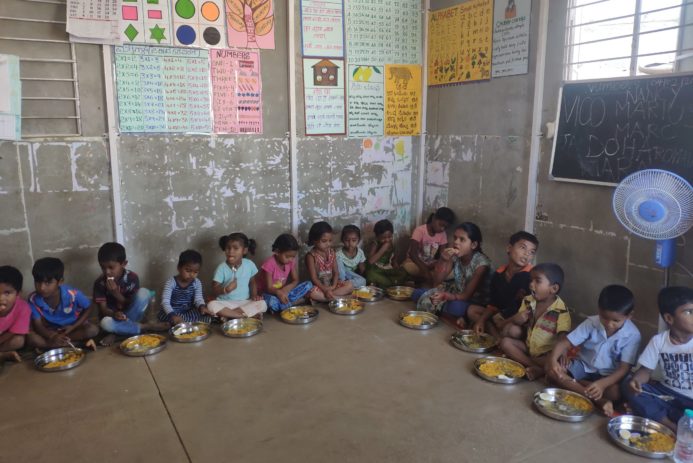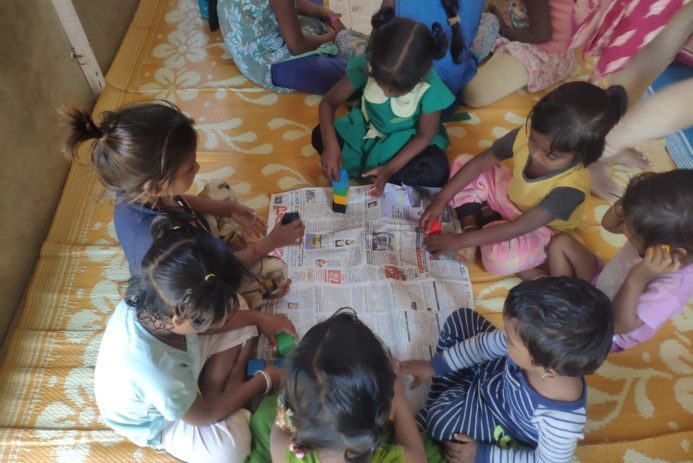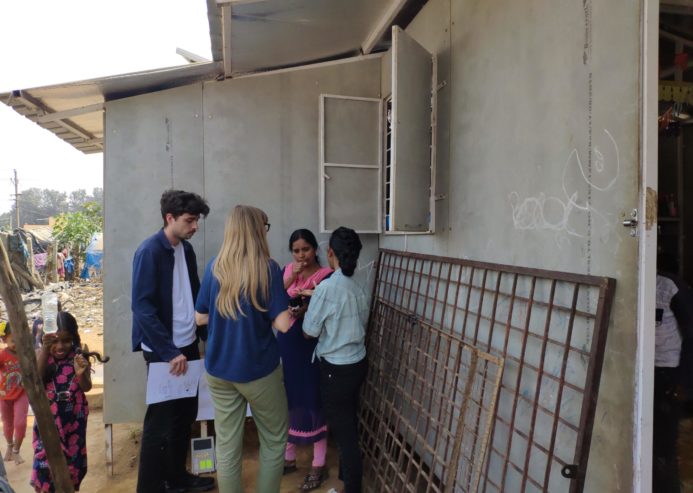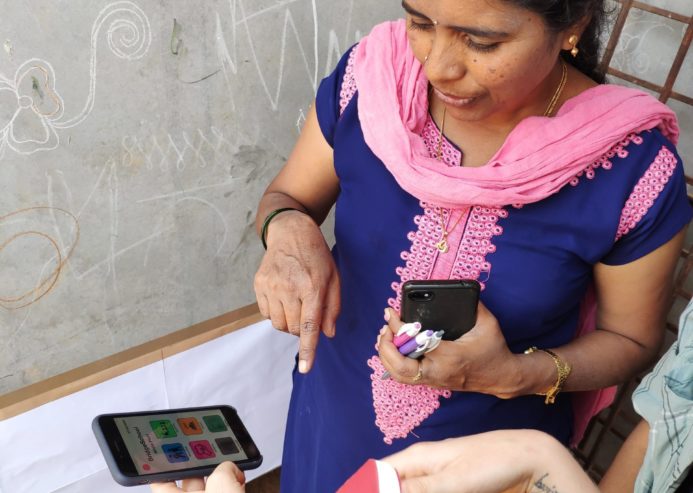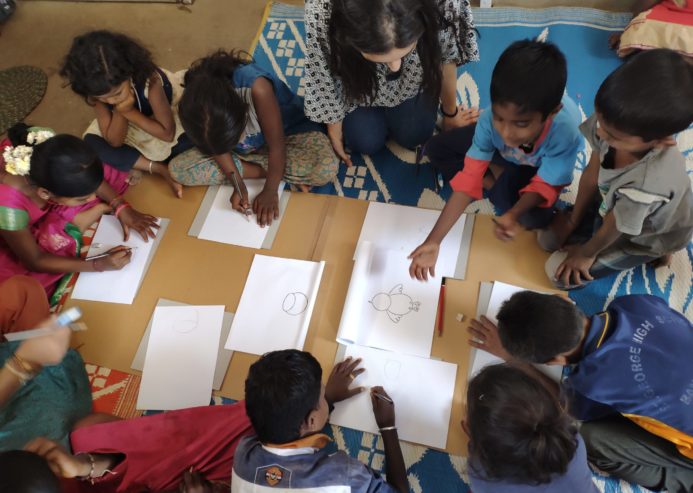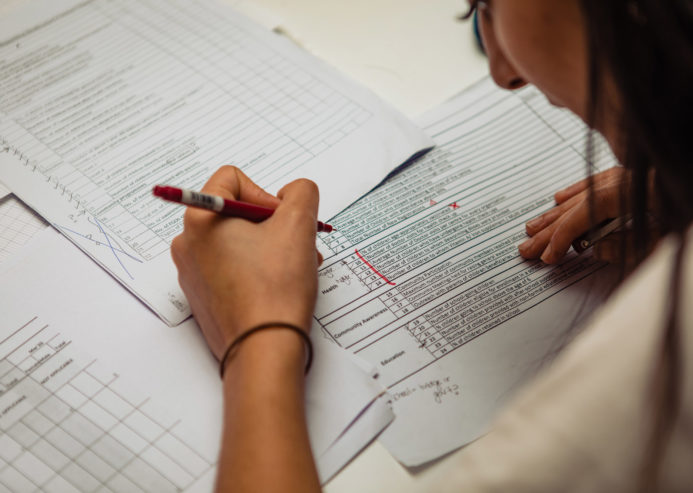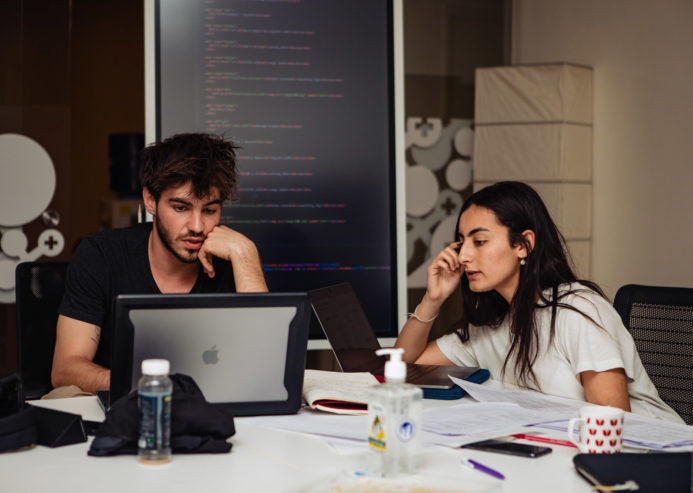Bridge App
Reducing teacher workload through efficient online reporting
”
Amara SlaymakerEPFL
”
Valentin CalameEPFL+ECAL Lab
”
Doha MahfoudhiHEC, Lausanne
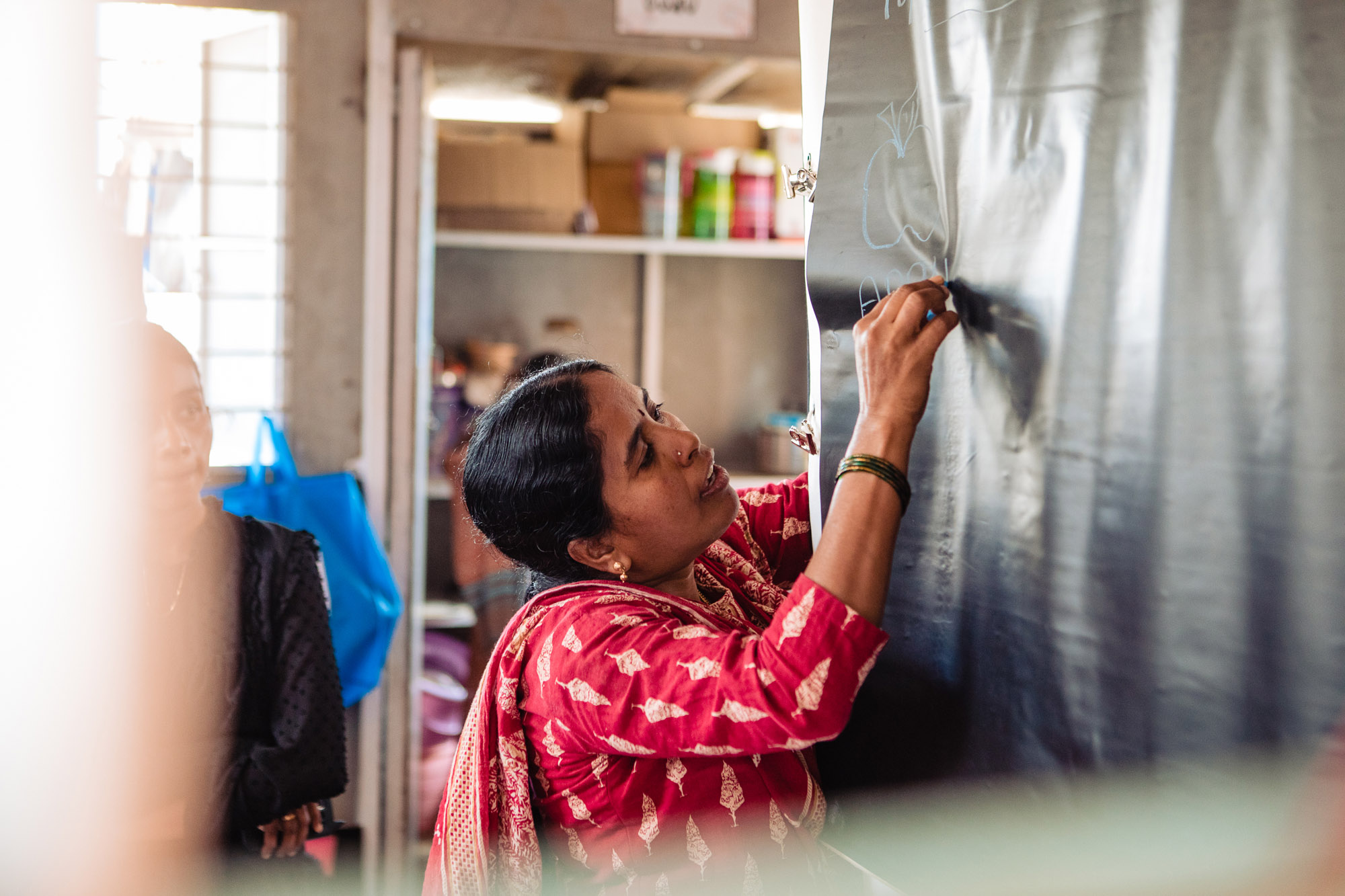
How might we reduce teacher's workload in Bridge schools?
The Bridge schools are established for migrant workers children in the labor colonies. The teachers have a lot of responsibilities and must juggle every day with numerous constraints and variables: fluctuating number of students (up to 60) of all ages, limited space, and scarce resources.
Doha, Amara, and Valentin were asked to observe teachers' daily work in order to propose a solution that could decrease their workload. To identify potential tasks or moments that could be optimized, they have spent time observing the daily school's routine and discussing with the different stakeholders (teachers, students, parents, community members, social workers).
Identifying teachers' pain points
Thanks to the initial field research, the team has identified several inspiring insights. Firstly, teachers have many more responsibilities layers than expected. In addition to the educational activities, they have to manage food supply, school accounting, lunch cooking, pills distribution, and children's health condition monitoring. This multitasking frequently leads to overload along the day. Then, most of the extra time they need after class hours is dedicated to reporting to the NGO.

2. Solution Definition
Field-testing initial ideas
The team has decided to test two different approaches to decrease teachers' workload: 1) proposing a new learning activity format with very light supervision needs and 2) a digital tool to support administrative work (most of the teachers don't have access to computers but have smartphones). With low-fidelity prototypes, they returned to the schools to gather new feedback. The result clearly informed the team on which approach they should focus on: helping teachers to save time on reporting.
The real digital affordability challenge
However, proposing a digital solution in this context raises different questions: how to propose a ready-to-use prototype in 4 days that deliver value from day 1? How to make a mobile solution compatible with most of the smartphones? What is the maintenance strategy for an NGO without technical capability? How to incentivize them to support the project?
The team came up with the idea to use Airtable, an existing, free, flexible and robust cloud collaboration service to build the proper data management system. And to connect it to a light and simple web app to facilitate user experience.

3. Prototype Validation
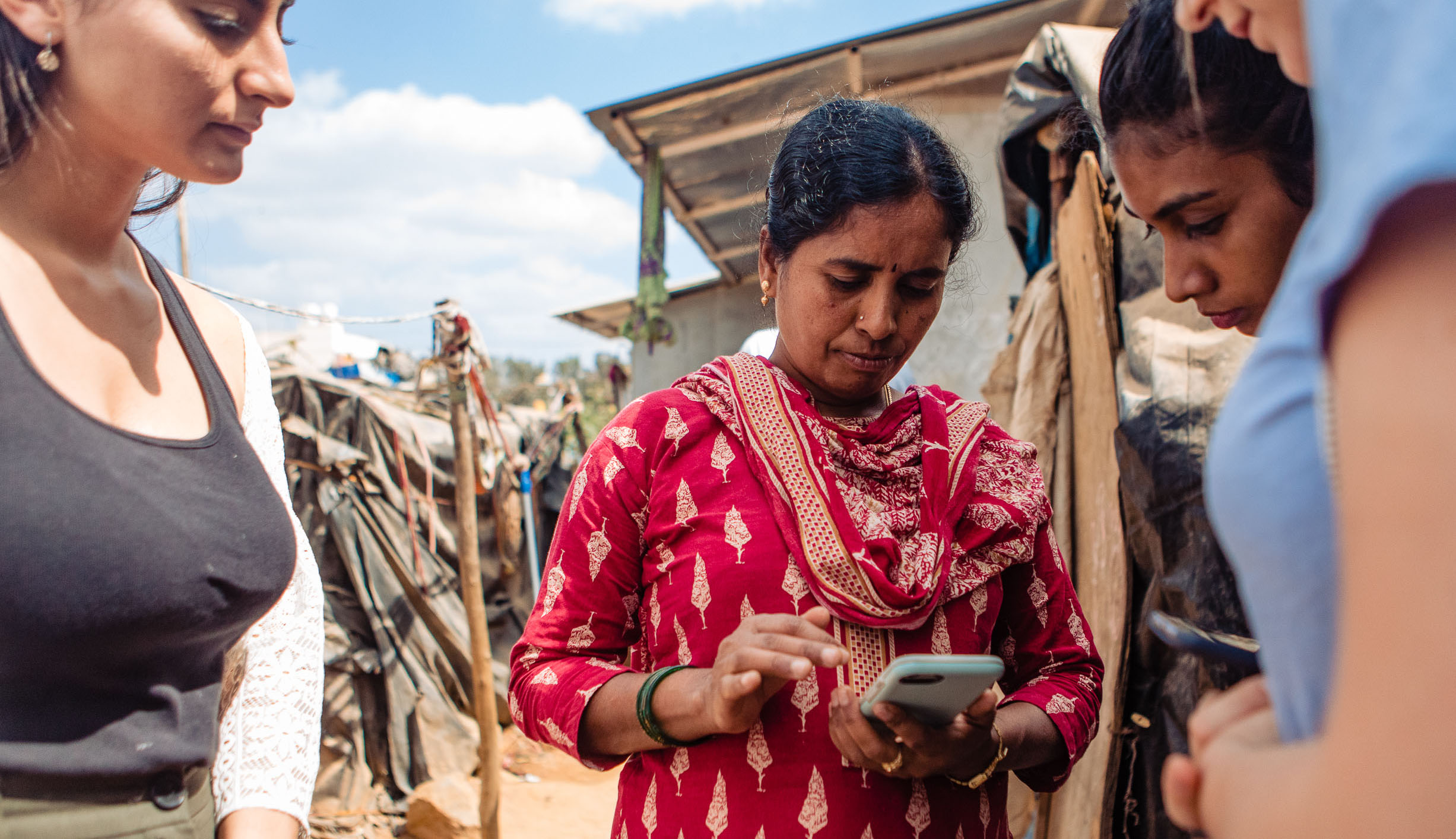
Testing the adoption
Working with an existing, free and known service enabled the team to propose a ready-to-use basic digital solution in 4 days for testing in 2 different Bridge schools. Leveraging from the initial feedback, they focused on the features that would bring more value to the teachers: school expenses, attendance, and healthcare tracking with automated aggregated metrics.

For its part, the NGO is able to monitor and triangulate schools' data in real-time with the app backend, opening new perspectives: metrics overview, missing kids, epidemic,... With an affordable maintenance cost thanks to the solution's technical simplicity. The impact of the project on the different stakeholders will be tracked by local partners.

